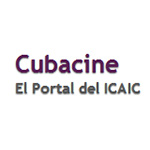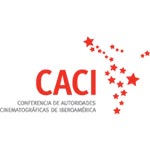 “Nuestro objetivo final es nada menos que lograr la integración del cine latinoamericano.
Así de simple, y así de desmesurado”.
“Nuestro objetivo final es nada menos que lograr la integración del cine latinoamericano.
Así de simple, y así de desmesurado”.
Gabriel García Márquez
Presidente (1927-2014)

ENSAYO

-

Documental - ficción: línea fronterizaPor José Carlos Avellar
Tal vez sea posible decir que el verdadero tema de los más expresivos documentales realizados durante el último año sea la ficción cinematográfica. Tal vez sea posible, también, invertir la proposición y decir que si verdadero tema de las películas de ficción producidas en el mismo período sea el documental fílmico y, más aún, reunir las dos proposiciones para ver en el montaje una síntesis del cine brasileño de ahora.
Un punto común une películas muy diferentes entre sí, unas documentales y otras de ficción, como Santiago, de João Moreira Salles; Mutum, de Sandra Kogut; Tropa de élite, de José Padilha; Juízo, de Maria Augusta Ramos; Jogo de cena, de Eduardo Coutinho; y Linha de passe, de Walter Salles y Daniela Thomas: una tensión interna presiona el encuadre entre la opción de mostrarse entero, acabado y en buen orden, y la de presentarse incompleto, sin ningún orden o principio de organización: una tensión que es algo así como un gesto que antes de completarse, en el aire, cambia de dirección.
Dos imágenes propuestas por João Moreira Sailes pueden ayudarnos a ver ese punto común. La primera es una reflexión sobre el documental, un modo de hacer cine que reúne el máximo de información posible para poder filmar y vuelve para casa con una película diferente de la cuidadosamente planeada. La segunda es el comentario sobre la imposibilidad de precisar el momento en el que el paseo de Astaire y Charisse en Melodías de Broadway 1955 (The Band Wagon; V. Minnelli, 1953) Se hace danza sin dejar de ser un caminar, incluido en Santiago. El pie en el aire casi a punto de tocar la tierra, toma otra dirección, traza en el espacio una línea (¿pase?) y el movimiento se convierte en danza. Dos imágenes: la película muy planeada para llegar a un resultado distinto de lo planeado; la película que, a la mitad del gesto, deja la tierra firme bajo sus pies para flotar al viento en el aire. Dos imágenes del deseo de componer una forma donde se borran las fronteras entre el documental y la ficción.
Un paralelismo entre la sensación de que todo es resultado del azar en Linha de passe y la de que nada resulta azaroso en Santiago (esa conversación de hermanos) puede resumir la cuestión. Un paralelo entre lo que parece puro sentimiento en Mutum y lo que parece pura razón en Juízo (esa conversación de mujeres sobre niños sin padres, o sin país), también... Lo que parece natural en un documental, el estar disponible para el azar, lo encontramos en la ficción. Lo que parece natural en la ficción, la imagen bien planeada antes del rodaje, lo encontramos en el documental. Mejor aún: un paralelismo entre Linha de passe (el gesto casi documental para componer una ficción) y Juízo (un gesto casi de ficción para componer un documental) clarifica la cuestión: el cine discute la urgencia de ver lo que no se quiere ver al margen de las grandes ciudades, Río de Janeiro (los niños, a los que se exige que tengan juicio todo el tiempo) y São Paulo (los jóvenes a los que se exige mantener la pelota todo el tiempo en el aire). Lo que un personaje de Linha de pase dice al hombre que no quiere mirarlo, por creer que es un asaltante, es lo mismo que los niños del documental de Maria Augusta gritan en silencio para la jueza: ¡mírame!
El vientre de la madre embarazada en concordancia con la línea de la enorme bandera del estadio de fútbol en Linha de passe, y la voz inaudible del niño frente a la justicia en oposición a la voz firme de la jueza que impone una punición al hijo que se ha portado mal en Juízo, son dos imágenes vivas del país y de su cine. Como en ese modo de jugar el fútbol, donde los jugadores deben tocar la pelota una sola vez y pasarla al otro jugador sin dejar que ella toque el suelo, así, ficción y documental establecen una conversación y una influencia recíproca en el cine brasileño sin dejar caer la pelota: línea de pase. El rigor en la composición del encuadre en Coutinho, Maria Augusta y Salles sitúa sus documentales bien cerca de la ficción, tal como lo inestable e informal de la composición en Kogut, Padilha y Walter/Daniela sitúa sus ficciones en el mismo espacio del documental.
Jogo de cena pone actrices a repetir para la cámara los testimonios de mujeres entrevistadas poco antes en aquel mismo sitio: y así el espectador ve dos mujeres diferentes decir el mismo texto sin saber exactamente quién es la actriz y quién es la entrevistada. Juízo pone jóvenes a repetir para la cámara las respuestas que los niños infractores ofrecieron poco antes en aquel mismo espacio, la sala de interrogatorios del juez. Y lo hace no solo porque no está permitido mostrar la cara de menores acusados de alguna infracción, sino porque, al elegir no-actores de los mismos barrios pobres en que vivían los que están frente a la justicia, puede componer una imagen-espejo que documenta de modo simultáneo los niños criminal es y lo criminal del sistema que presiona a los niños.
En lo documental, la presencia de la ficción: Coutinho mira las mujeres que entrevista como actrices que han creado una persona para hablar de sí mismas. Maria Augusta mira a los jóvenes no-actores como personas que no actúan, que son como vemos en la película, que sufren (en otro espacio) lo mismo que sufren los que se encuentran frente al juez.
En las conversaciones con el mayordomo (filmadas en blanco y negro en 1992, bajo influencia de Ozu, y montadas en 2007, bajo la experiencia de documentales como Nelson Freire, 2003) Santiago propone una reflexión sobre la cuestión que alimenta la estructura de Jogo de cena y Juízo: el conflicto entre el ostinato rigore que exigía Leonardo y una no menos obstinada búsqueda (por decirlo así) de una ausencia de rigor. La sensación que se recibe de los trabajos de Cao Guimaraes es esa, la de una ausencia de rigor: Acidente anota los vacíos de ciudad es elegidas al azar, y Andarilho testimonia los vacíos de caminantes solitarios. Los documentales parecen no tener ningún tema para documentar y sus títulos componen casi una imagen-concepto de una ficción que se propone como algo hecho por alguien que lo ye por azar.
Mutum, por ejemplo: la adaptación de la novela de Guimarães Rosa pasó por diferentes versiones de guión y por investigaciones de la realidad del escritor y de su personal modo de trabajo. Pero, a la hora de filmar, Sandra trabajó casi como si no existiera ni novela ni guión. Los actores no tenían el guión en sus manos y no sabían que la historia era de Rosa. Fueron invitados a prestar sus nombres verdaderos a los personajes y a improvisar las escenas a partir de ciertas indicaciones. Aquí la ficción, en realidad, es un documental de ese proceso de improvisación. Semejante método fue utilizado también en Tropa de elite. Los actores no recibieron el guión y fueron invitados a improvisar las escenas y los diálogos durante el rodaje. La ficción es un documental sobre ese laboratorio de teatro en espacio abierto. Lo distante que están una de la otra hace que el punto común se tome más visible y significativo: una película viene de una novela, la otra de un hecho realmente ocurrido; una se presenta con delicadeza, la otra explota en la pantalla con violencia, pero en las dos existe un mismo proceso creativo, que parte de un largo trabajo de construcción de una ficción para, llegado el rodaje, olvidar lo previamente planeado y ponerse a disposición de lo imprevisible. En una línea de pase entre documental y ficción lo que se busca es filmar lo muy conocido como si fuera totalmente desconocido.
 Documentary - fiction: a border line
Documentary - fiction: a border line
By José Carlos Avellar
Maybe is possible to say that the true theme of the most expressive documentaries made last year was the film fiction. Maybe it is also possible to invert the proposition and say that the true theme of the fiction films that were made in the same period was the documentary and, even to fuse the two propositions to see in their overlapping a synthesis of the current Brazilian cinema.
A common aspect relate films that are very different from one another, some documentaries and others narrative films, such as Santiago by João Moreira Salles; Mutum by Sandra Kogut; Tropa de élite by José Padilha; Juízo by María Augusta Ramos; Jogo de cena by Eduardo Coutinho; and Linha de passe by Walter Salles and Daniela Thomas: an internal tension presses the frame between the option of being shown complete, finished and in good order, and the one of showing it incomplete, without any order or organizational principle: a tension that is something as a gesture that before being completed, in the air, changes direction .
Two images showed by João Moreira Sailes can help us to see that common aspect. The first one is a reflection on the documentary, a way of filmmaking that gathers the maximum possible amount of information in order to film and returns home with a different film from the one that was carefully planned. The second one is the comment about the impossibility of specifying the moment in which Astaire and Charisse´s walk in Broadway Melodies 1955 (The Band Wagon; V. Minnelli 1953) turns into a dance without stopping to be a walk, a moment included in Santiago. The foot in the air almost about to touch the floor, take another direction, it traces a line (a borderline?) and the movement becomes dance. Two images: the much planned film arrive at last to a result different from what was planned; the film that, at the middle of the expression, leaves the land under its feet to float toward the wind in the air. Two images of the desire of creating a form, where the border lines between the documentary and the narrative film fade away.
A parallelism between the sensation that everything is the result of the chance in Linha de passe and that nothing is casual in Santiago (that conversation among the brothers) will summarize the matter. A parallel between what seems pure feeling in Mutum and what seems pure reason in Juízo (that women conversation about children without parents, or without country), also... What seems natural in a documentary, being ready for the chance, is also found in the fiction. What seems natural in the fiction film, the image very well planned before the shooting, could also be found in the documentary. But even better: a parallelism between Linha de passe (the almost documentary gesture to compose a fiction) and Juízo (an almost fiction gesture to compose a documentary) clarifies the question: the cinema discusses the urgency of seeing what is not wanted to be seen to the margins of the big cities, Río de Janeiro (the kids who are requested to be reasonable all the time) and São Paulo (the kids who are requested to keep the ball all the time in the air). What a character of Linha de passe tells to a man that does not want to look at him because he believes he is an attacker, it is the same that the children of August María's documentary cry in silence to judge: look at me!
The pregnant mother's womb in agreement with the line of the enormous flag of the soccer stadium in Linha de passe, and the inaudible voice of boy who faces the justice in opposition to the judge's firm voice who imposes a punishment to the son that has misbehaved in Juízo, are two living images of the country and its cinema. As in that way of playing soccer, in which the players should touch the ball just once and pass it to the next player without letting it touch the ground, this way, fiction and documentary establish a conversation and a reciprocal influence in the Brazilian cinema without letting the ball fall to the ground: a borderline. The rigor in the composition of the frame in Coutinho, Maria Augusta and Salles places their documentaries very close to the fiction, just as the unstable and informal of the composition in Kogut, Padilha and Walter / Daniela place their fictions in the same space that the documentary.
Jogo de cena make that actresses repeat in front of the camera the testimonies of women interviewed moments ago in the same place: in this way the spectator sees two different women say the same text without knowing exactly who are the actresses or the interviewees? Juízo make that young people repeat in front of the camera the answers that the young offenders offered before in that same space, the judge's interrogation room. And it not only do that because is not allowed to show the face of minors who has been accused of some infraction, but because as the film chooses non-actors of the same poor neighborhoods where lived those that face justice, it could create a mirror-image that documents at the same time the young offenders and the criminal side of a system that oppresses them.
In the documentary, the presence of the fiction: Coutinho looks at the women that he interviews as actresses who have created a person in order to talk about themselves. María Augusta looks at the young non-actors as people that do not act, that they are as we see in the film, that they suffer (in another space) the same that those that are in front of the judge.
In the conversations with the butler (filmed in white and black in 1992), under the influence of Ozu, and edited in 2007, under the experience of documentaries as Nelson Freire, 2003), Santiago proposes a reflection about the question that feeds the structure of Jogo de cena and Juízo: the conflict among the ostinato rigore that demanded Leonardo and a not less obstinate search (to say it in this way ) of an absence of rigor. That is the sensation that is received from the works of Cao Guimaraes, an absence of rigor: Acidente shows the emptiness of cities that were chosen at random and Andarilho testifies the emptiness of lonely walkers. The documentaries seem not to have any theme to document and their titles almost compose an image-concept of a fiction that is advanced as something made by somebody at random.
Mutum, for example, the adaptation of Guimarães Rosa’s passed through different screenplay versions, and research of writer´s reality and personal way of work. But, when filming, Sandra almost worked as if it there were not novel or screenplay. The actors did not have the screenplay in their hands and did not know that the story was by Rosa. They were invited to lend their true names to the characters and to improvise the scenes according to certain indications. Here the fiction, in fact, is a documentary of that improvisation process. A similar method was also used in Tropa de élite. The actors did not receive the screenplay and were invited to improvise the scenes and the dialogues during the shooting. Fiction is a documentary about that theater laboratory at an open space. The distant that are each one from the other makes the common point more visible and more significant: one film comes from a novel, the other comes from facts that really took place; one showed daintiness, the other explodes in the screen with violence, but both are based on the same creative process that starts from a long work of construction of fiction in order to forget what has been previously planned when the shooting begins and be ready for the unforeseeable. In a border line between documentary and fiction what is intended is to film what is very well-known as it were unknown.

Copyright © 2026 Fundación del Nuevo Cine Latinoamericano. Todos los derechos reservados.
©Bootstrap, Copyright 2013 Twitter, Inc under the
Apache 2.0 license.















